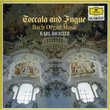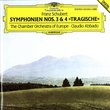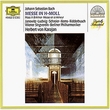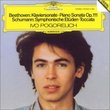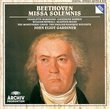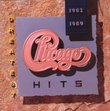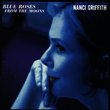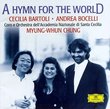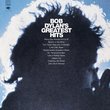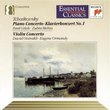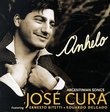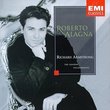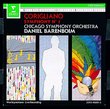| All Artists: Niccolo Paganini, Charles Dutoit, London Philharmonic Orchestra Title: Paganini:Violonkonzerte No. 1 & 2 Members Wishing: 0 Total Copies: 0 Label: Deutsche Grammophon Release Date: 10/25/1990 Genre: Classical Styles: Forms & Genres, Concertos, Instruments, Strings Number of Discs: 1 SwapaCD Credits: 1 UPC: 028941537829 |
Search - Niccolo Paganini, Charles Dutoit, London Philharmonic Orchestra :: Paganini:Violonkonzerte No. 1 & 2
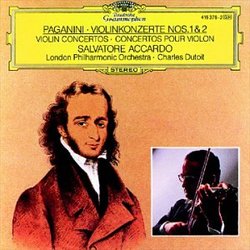 | Niccolo Paganini, Charles Dutoit, London Philharmonic Orchestra Paganini:Violonkonzerte No. 1 & 2 Genre: Classical
|
Larger Image |
CD DetailsSimilar CDsSimilarly Requested CDs
|
CD ReviewsBest overall recording G. Avvinti | Sicily, Italy | 05/18/2002 (5 out of 5 stars) "The first violin concerto of Paganini's has been recorded by the best violinists (and more) by now, and sometime more than once by the same. Fortunately, this give us a wide choice of good recordings, each of which can be singled out for some different feature. However, reading reviews about this concert will reveal that almost always a comparison with this Accardo's recording is present. And the reason is quite simple: this is the best overall recording.The performance by Accardo is simply flawless. He keeps is known style of simplicity and clarity. For example he doesn't use any doubling of voice where others like Perlman does, or he prefer the pizzicato where some others stick with a staccato. Anyway, in my personal view of the Paganini stile's, I think that Accardo's is the closest I've heard. As a note he plays an elaboration of the full cadenza by Emile Sauret while virtually all the others (Perlman and Vengerov with them) use the abbreviated Sauret. This result in a much longer first movement: more than 22 minutes instead of the average of 19-20 (the rhythm is quite the same in most respected recordings).This recording benefits too from a wonderful performance by the LPO directed by Charles Dutoit. Differently from other concertos like Beethoven's, the Paganinian idea of a violin concerto was to place the violin over everything else, and the LPO perfectly respect this idea playing a secondary but perfect role. They have played the integrale of Paganini's violin concertos with Dutoit and Accardo, and the overall feeling is so evident.The coupling with the second violin concerto is a classic, but for me always good choice. Paganini has his idiosyncratic style and it's not so simple to couple it with other concerts. Another good coulping, too, is the one with the "Carmen Fantasy" by Sarasate, in the EMI Perlman's recording.The disc is an ADD, and the difference with better and more modern DDD is not so hidden, especially in the "tutti". Anyway, among the ADD this is surely one of the good ones, in this DG has done a good work." Sublime Javier Bolanos | Monterrey, Mexico | 11/16/2000 (5 out of 5 stars) "This is the best recording (that I have heard, anyway) of Paganini's violin concertos 1 & 2. Salvatore Accardo is flawless and the London Philarmonic gets the job done." An excellent addition to your library of violin concerto dis Tom Brody | Berkeley, CA | 04/19/2010 (5 out of 5 stars) "These Paganini compositions are the next logical step for adding to your collection of violin concertos, after obtaining those by Bruch, Mendelssohn, Brahms, and Bartok. The soloist, Salvatore Accardo, has at least 150 recordings, according to the Amazon.com web site.
CONCERTO No. 1. The opening theme of ALLEGRO sounds somewhat like the Lone Ranger theme in Rossini's WILLIAM TELL OVERTURE. While Paganini admired Rossini, and had actually performed the WILLIAM TELL OVERTURE (performance of July 17, 1833 in Theater Royal Drury Lane, according to Stratton's book), it should be noted that Paganini composed his Violin Concerto No.1 in 1818, and Rossini composed his overture much later, in 1829. At one minute, 30 seconds, the orchestra provides a "dreamy tune." Then, the faux Lone Ranger theme is repeated. The violin solo makes its entrance at 3 min, 10 sec. The solo provides the "dreamy tune". At 6 min, 35 sec, the violin plays a rapid cat & mouse chasing sequence. In this sequence, the violin uses an interesting jagged technique for descending, from the high register down to the low register. At 11 min, 40 sec, comes a jig motif, where the violin plays 2 notes simultaneously. The "dreamy tune" returns at 14 minutes. At 19 minutes, the violin solo provides an interesting wiggly-squiggly motif, and the solo continues until the very end, providing skittering motifs and glissandos. ADAGIO is slow and exudes a feeling of pathos and drama. The violin plays in the lower register. At 2 min, 30 sec, the full orchestra provides a brief crescendo, reminiscent of an approaching hurricane. RONDO provides, for the first minute, the violin bow bouncing on the strings, while the orchestra generally provides a regular scheme of chugging chords, each chord separated by a tiny interval of silence. At 4 minutes, the violin solo provides a pizzicato motif, sounding like firecrackers. On occasion, a horn provides a 2-note motif that goes, "Ta-taa." RONDO lacks any tunes that might be apparent or discerned by a layperson. (This is in striking contrast to the RONDO in Paganini's Violin Concerto No. 2.) CONCERTO No. 2. ALLEGRO begins with a "perky tune" played by the woodwinds. At one minute, the strings take over and play the "perky tune." The violin solo makes its entrance at 2 min, 50 sec. At 3 min, 50 sec, the bow bounces on the strings. At 4 min, 40 sec, the violin solo provides the "perky tune" again. At 5 min, 50 sec, the violin solo provides an eerie motif, where two dissonant notes are simultaneously played. Fluttery woodwinds provide a colorful interlude at 7 min, 30 sec. At 9 min, the violin solo provides a sequence sounding like chopping wood (one can almost see the wood chips flying). The "perky theme" returns at 10 min, adn the chopping wood episode returns, and the 2-note dissonant motif is repeated. ADAGIO starts with a cluster of mellow horns. Later, we hear a gentle whispy violin solo. Accompaniment takes the form of an orchestral string pizzicato. The tune of the violin solo is a bit like Borodin's "neverending melody" of Polovtsian Dances - Dance of the Maidens. RONDO is the reason I bought this compilation of the six Paganini violin concertos. RONDO, also known as "La Campanella," contains a tune made famous by Franz Liszt in his SIX GRAND ETUDES AFTER PAGANINI. I have the recording by Andre Watts on the SERAPHIM label. Anyway, RONDO features a little bell (an actual bell). At 3 minutes, 50 seconds, we hear an interesting descending motif. (I like descending motifs in music.) At 4 min, 15 sec, the famous La Campanella tune returns, and stays with us for one minute. La Campanella returns one last time at 8 minutes. CONCLUSION. More information on Paganini can be found in a book, NICOLO PAGANINI by Stephan Stratton (1907). The book is available from Amazon.com. It is also provided by Google. From this book, we learn that in the first violin concerto, the solo violin is tuned a semi-note higher and the part is in D, while the orchestra is in E flat (page 164). The book also provides a quote from Berlioz, "He [Paganini] has known how to render distinct and dominating the tones of a solo violin by tuning its four strings a semitone above those of the orchestra, which enabled him to play in the brilliant keys of D and A." (page 138). The author, Mr.Stratton, believes that it is improbable that Paganini or Berlioz were aware that Mozart had used the same technique in Mozart's CONCERTANTE FOR VIOLIN AND VIOLA, where the viola part is in D, but where the orchestra is in E flat(page 138)." |

 Track Listings (6) - Disc #1
Track Listings (6) - Disc #1